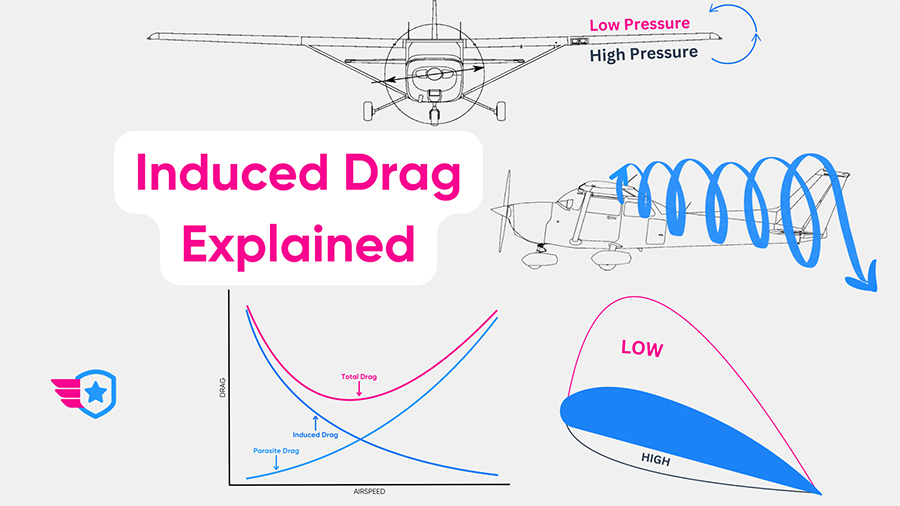-
Key Takeaways
-
1. Running Out of Funds
- What Can You Do to Avoid This?
-
2. Repetitive Training and Stagnation
- What Can You Do to Avoid This?
-
3. Poorly Structured Training
- What Can You Do to Avoid This?
-
4. Failing Knowledge Tests
- What Can You Do to Avoid This?
-
5. Poor Instruction
- What Can You Do to Avoid This?
-
6. Medical Issues
-
Conclusion
Many people have dreamt of becoming a pilot on some level, either private or commercial. However, according to the data collected by the Aircraft Owners and Pilots Association (AOPA), statistics show that the dropout rate for student pilots is close to 80%, which is relatively high.
So why do so many people quit flying, and what can you do to stay engaged, motivated, and focused to attain your pilot’s license? Here are 6 of the most common reasons.
Key Takeaways
- Flight training is inherently expensive and challenging. Many underestimate the time, effort, and money required to attain a license.
- A lack of structured training and poor instruction leave students unprepared for exams and flights.
- Nearly 80% of student pilots drop out, but preparation can help you continue.
1. Running Out of Funds

Flight training is costly. The leading reason many people quit flying is the lack of finances. Cash flow issues appear around the time of the first solo, often leading to students quitting before reaching that milestone.
The first solo is a momentous occasion and a true test of your flying skills. It’s also one of the most dangerous moments in a student’s flying career, as no instructor can help you. The instructor is under a lot of pressure to ensure the student is prepared, as they risk their license.
As a result, it takes a student pilot 15 to 20 hours to solo. The going wet rate for a Cessna 152 and Cessna 172 is approximately $130 and $170, respectively. In addition, instructor fees range from $60 to $80 an hour. So, reaching your first solo could cost as much as $3,000, other expenses not included.
So, students might spend more than they planned without feeling any sense of achievement.
What Can You Do to Avoid This?

Flight training has come a long way since the days of old. Students now have access to many financing options, such as scholarships and loans, to help with costs.
Many organizations help aspiring pilots attain their dreams. The following organizations offer scholarships:
- Aircraft Owners and Pilots Association (AOPA),
- Experimental Aircraft Association (EAA),
- Women in Aviation (WAI), Latino Pilots Association (LPA)
- Organization of Black Aerospace Professionals (OBAP)
Ask your CFI or flight school for help when applying for these scholarships to improve your chances of landing one.
You can also take out an educational loan. However, you should approach these with caution. Ensure you understand the financial implications of taking on a long-term loan.
2. Repetitive Training and Stagnation
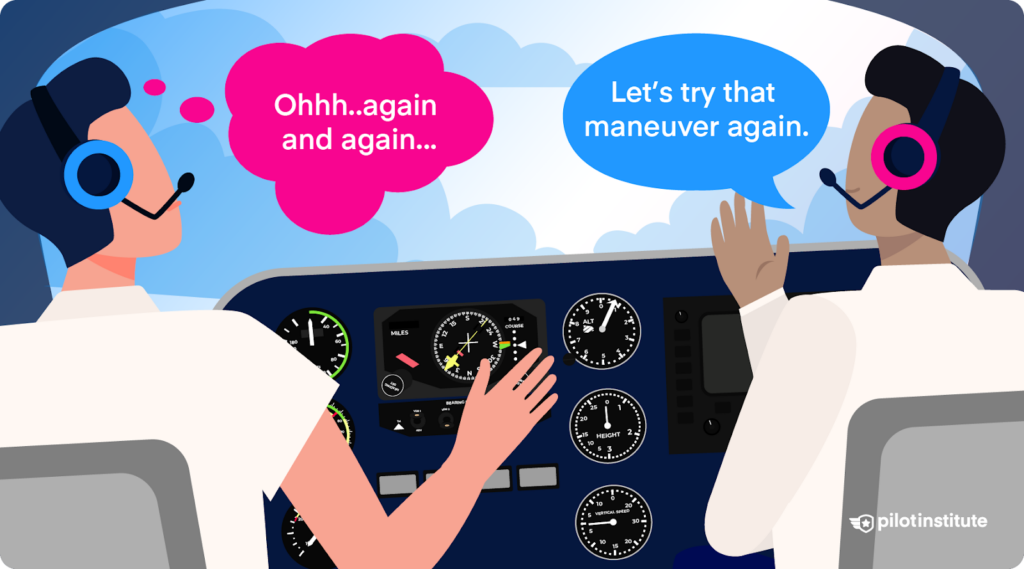
Flying is a skill you must polish. Maneuvers are repeated until the student can perform them within the tolerances specified in the Airmen’s Certification Standards (ACS). Some flight schools need students to complete a particular maneuver or lesson multiple times for insurance purposes.
Regardless of the reasons, repetition is part and parcel of flight training. After all, practice makes perfect. However, the repetitive nature of flight training can become dull. Students can become disheartened if they can’t seem to achieve the standards set out for them. This can cause them to become disillusioned with the process and quit training. Especially as it costs a lot of money to repeat lessons.
It doesn’t help that many Certified Flight Instructors (CFI) don’t communicate the reasons for repeating a lesson well. Many simply say that the lesson was unsatisfactory and reschedule the next flight.
What Can You Do to Avoid This?

The best way to avoid feeling like you aren’t progressing is to have short and long-term goals. If a lesson is being repeated, the why has to be clear. In addition, ask your instructor what standards you must achieve to progress. Then work towards achieving them.
An example might be short-field landings. The ACS specifies that you must land within 200 ft of your landing point. If you fall short, revisit the theory and ask your CFI to demonstrate a landing. It could help you pick up on some things you missed.
In addition, discuss setting performance goals for yourself with your instructor. For example, if you can’t get within 200 ft, try to get within 300 ft consistently, then 250 ft, etc. Achieving these goals will help you see results and progress.
If you are within standards, but your flight school insists you must repeat the lesson for insurance purposes, ask for documentation.
3. Poorly Structured Training
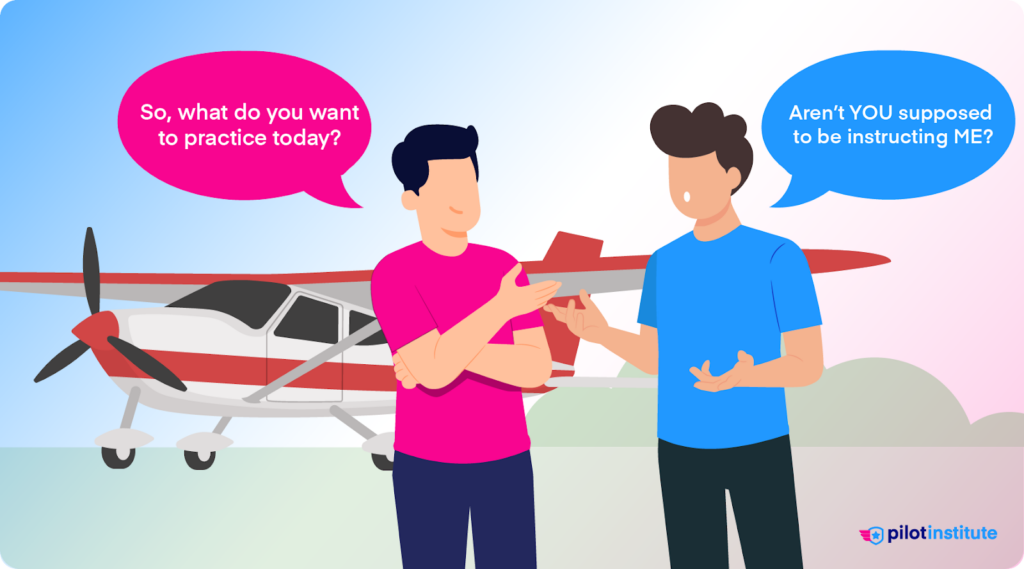
One main reason many student pilots quit is the lack of a structured training program or syllabus. Many Part 61 flight schools lack a structured training program. As mentioned, not having defined goals to work towards throws many students off. Because they can’t gauge their progress and prepare for learning.
In unstructured training programs, some lessons introduce many new concepts and maneuvers that overwhelm the student. On the other hand, some lessons are boring time-building lessons. In addition, should the student switch CFIs, the lesson plans might change. Which means they might have to repeat flights.
If a flight school has a syllabus, it can steadily introduce new concepts and lessons and work on perfecting one thing at a time. Additionally, it doesn’t matter which CFI flies with the student; they can pick up where the other left off.
What Can You Do to Avoid This?
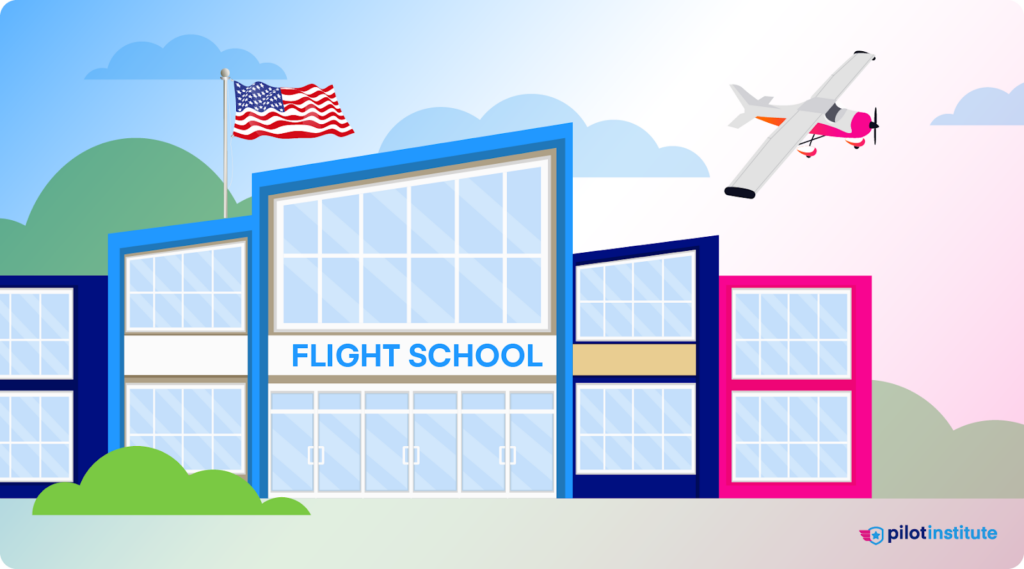
The only way to avoid this category is to find a flight school with a structured program. Ensure that your school has a strict and structured training program that you can stick to. It should let you track your progress and prepare for lessons ahead of time. Prior preparation also reduces ground briefing times, allowing you to save money.
4. Failing Knowledge Tests

Passing a knowledge test to attain your pilot’s license and ratings is a requirement. The pass mark is 75. However, preparing for the knowledge test becomes challenging when you have to do it by yourself.
Many students fail their knowledge tests the first time, which makes them feel inadequate and reduces their motivation to study. Studying and retaking the test takes a lot of willpower and discipline. Many aspiring pilots quit at this roadblock.
What Can You Do to Avoid This?

Luckily, plenty of resources on the internet offer courses that can help you pass the test. These include preparation courses that offer study materials, mock tests, and instruction.
Pilot Institute is one of the leading test preparation providers in the US. We offer courses for various licenses and levels. Learn more about our private pilot course here.
5. Poor Instruction

The Certified Flight Instructor (CFI) is the primary teacher to a student pilot, both in the airplane and on the ground. Having a good teacher can make or break your flight experience. A good teacher pushes a student to do better and study harder, inspires trust, and builds self-confidence in a student.
Instructors are a dime a dozen. Many aspiring airline pilots need 1,500 hours for their ATPL rating. The easiest way to gain these hours is to become a flight instructor. But, many instructors simply want to build time and don’t want to take on the responsibilities of being a teacher.
Many flight instructors also quit after getting into an airline. Some provide little to no notice, which can stall the student’s progress. Good instructors are few and far between.
A good flight instructor takes the initiative to help a student with their training. They might stay late to help them understand a concept or flight lesson, apply for scholarships, or other ways. They take the time to get to know and get along with the students.
Sometimes, there’s a personality mismatch, and the student and instructor don’t get along. Often, students feel obliged to stay with the instructor they are first assigned. Switching to a new instructor may require the student to redo specific lessons to exhibit competency, which costs money.
When this happens, the student might feel that the instructor doesn’t have their best interests at heart. It tends to dissuade them from continuing their training.
What Can You Do to Avoid This?
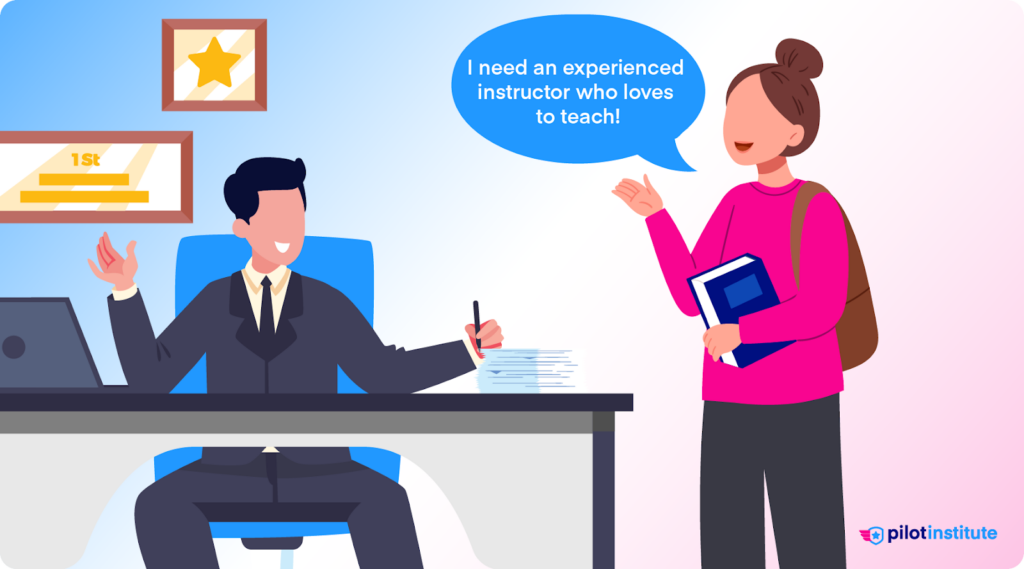
Don’t hesitate to ask for a different one if you feel that you and your flight instructor aren’t a good match. It happens more often than you’d think. Try to find a career instructor. They tend to be reliable and experienced and won’t disappear on you. As a bonus, most enjoy teaching students and will often go the extra mile for you.
Switching instructors occasionally is beneficial. It can introduce you to new techniques and give you a fresh perspective on your training. Sometimes, students who struggle with one instructor will flourish under the guidance of another.
6. Medical Issues

Medical issues frequently hold people back from their aviation goals. To fly, you need a valid medical certificate, and many students aren’t prepared for how strict the FAA’s medical standards can be. Conditions like heart problems, mental health disorders, or certain medications can lead to delays or even disqualification.
For some, the process of dealing with medical hurdles can be frustrating, especially if they weren’t expecting issues before starting training.If you think you might be unable to meet medical standards, schedule a consultation (not an exam) with an Aviation Medical Examiner (AME). If you have a disqualifying condition, they will help you navigate the process. While it can take time, many issues can be resolved, and you may still be eligible for a special issuance certificate.
Conclusion
Flight training is tough, and many students quit for various reasons. However, you can overcome most of these with little effort and perseverance. The most important thing when it comes to flight training is to choose a reputable flight school. This decision can set you up for success and help you with the above-mentioned problems.
If you are currently at an impasse in your flight training and thinking about quitting, remember that the path of least resistance isn’t always the best. As you grow older, you’ll likely regret what you didn’t do, so stick with it and don’t give up.


